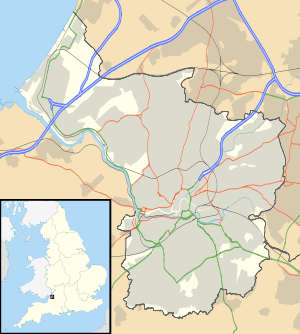Engineers House
| Engineers House | |
|---|---|
|
| |
 Location within Bristol | |
| General information | |
| Town or city | Bristol |
| Country | England |
| Coordinates | 51°27′34″N 2°37′35″W / 51.459367°N 2.626425°W |
| Completed | 1831 |
| Client | Charles Pinney |
| Design and construction | |
| Architect | Charles Dyer |
The Engineers House is a historic building, previously known as Camp House, on The Promenade, Clifton Down, Bristol, England. It has been designated as a Grade II* listed building.[1][2]
It was built in 1831 by Charles Dyer for Charles Pinney, who became mayor of Bristol,[3] serving during the Reform Bill riots of 1831.[2]
The neoclassical tow-storey limestone building has a symmetrical front in the centre of which is a pedimented portico with tuscan on ionic columns with a balcony above.[2]
It is now used as offices, a training centre and a conference venue.[4] In 2015 it achieved a green charter mark for the way in energy and waste are managed to reduce the carbon footprint of the building.[5]
References
- ↑ "Engineer's House". Images of England. Retrieved 2007-06-03.
- 1 2 3 "Engineer's House". Historic England. Retrieved 23 October 2016.
- ↑ "Charles Pinney". Discovering Bristol. Retrieved 23 October 2016.
- ↑ "Engineers' House". EEF. Retrieved 23 October 2016.
- ↑ "184-year-old Engineers' House in Bristol awarded green charter mark". South West Business. Retrieved 23 October 2016.
This article is issued from Wikipedia - version of the 11/23/2016. The text is available under the Creative Commons Attribution/Share Alike but additional terms may apply for the media files.